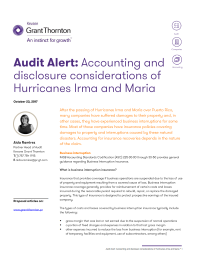-
Financial statements audits
Financial statement audits
-
Compliance audits
Compliance audits
-
Compilations and reviews
Compilations and audit
-
Agreed-upon procedures
Agreed-upon procedures
-
Corporate and business tax
Our trusted teams can prepare corporate tax files and ruling requests, support you with deferrals, accounting procedures and legitimate tax benefits.
-
International tax
Our teams have in-depth knowledge of the relationship between domestic and international tax laws.
-
Tax compliance
Business Tax
-
Individual taxes
Individual taxes
-
Estate and succession planning
Estate and succession planning
-
Global mobility services
Through our global organisation of member firms, we support both companies and individuals, providing insightful solutions to minimise the tax burden for both parties.
-
Sales and use tax and indirect taxes
SUT/ VAT & indirect taxes
-
Tax incentives program
Tax incentives program
-
Transfer Pricing Study
The laws surrounding transfer pricing are becoming ever more complex, as tax affairs of multinational companies are facing scrutiny from media, regulators and the public
-
Business consulting
Our business consulting services can help you improve your operational performance and productivity, adding value throughout your growth life cycle.
-
Forensic and investigative services
At Grant Thornton, we have a wealth of knowledge in forensic services and can support you with issues such as dispute resolution, fraud and insurance claims.
-
Fraud and investigations
The commercial landscape is changing fast. An ever more regulated environment means organizations today must adopt stringent governance and compliance processes. As business has become global, organizations need to adapt to deal with multi-jurisdictional investigations, litigation, and dispute resolution, address the threat of cyber-attack and at the same time protect the organization’s value.
-
Dispute resolutions
Our independent experts are experienced in advising on civil and criminal matters involving contract breaches, partnership disputes, auditor negligence, shareholder disputes and company valuations, disputes for corporates, the public sector and individuals. We act in all forms of dispute resolution, including litigation, arbitration, and mediation.
-
Business risk services
We can help you identify, understand and manage potential risks to safeguard your business and comply with regulatory requirements.
-
Internal audit
We work with our clients to assess their corporate level risk, identify areas of greatest risk and develop appropriate work plans and audit programs to mitigate these risks.
-
Service organization reports
As a service organization, you know how important it is to produce a report for your customers and their auditors that instills confidence and enhances their trust in your services. Grant Thornton Advisory professionals can help you determine which report(s) will satisfy your customers’ needs and provide relevant information to your customers and customers’ auditors that will be a business benefit to you.
-
Transaction advisory services
Transactions are significant events in the life of a business – a successful deal that can have a lasting impact on the future shape of the organizations involved. Because the stakes are high for both buyers and sellers, experience, determination and pragmatism are required to bring deals safely through to conclusion.
-
Mergers and acquisitions
Globalization and company growth ambitions are driving an increase in M&A activity worldwide as businesses look to establish a footprint in countries beyond their own. Even within their own regions, many businesses feel the pressure to acquire in order to establish a strategic presence in new markets, such as those being created by rapid technological innovation.
-
Valuations
We can support you throughout the transaction process – helping achieve the best possible outcome at the point of the transaction and in the longer term.
-
Recovery and reorganization
We provide a wide range of services to recovery and reorganisation professionals, companies and their stakeholders.
After the passing of Hurricanes Irma and María over Puerto Rico, many companies have suffered damages to their property and, in other cases, they have experienced business interruptions for some time. Most of those companies have insurance policies covering damages to property and interruptions caused by these natural disasters. Accounting for insurance recoveries depends in the nature of the claim.
Business interruption
FASB Accounting Standards Codification (ASC) 225-30-00 through 30-50 provides general guidance regarding Business Interruption Insurance.
What is business interruption insurance?
Insurance that provides coverage if business operations are suspended due to the loss of use of property and equipment resulting from a covered cause of loss. Business interruption insurance coverage generally provides for reimbursement of certain costs and losses incurred during the reasonable period required to rebuild, repair, or replace the damaged property. This type of insurance is designed to protect prospective earnings of the insured company.
The types of costs and losses covered by business interruption insurance typically include the following:
- gross margin that was lost or not earned due to the suspension of normal operations
- a portion of fixed charges and expenses in relation to that lost gross margin
- other expenses incurred to reduce the loss from business interruption (for example, rent of temporary facilities and equipment, use of subcontractors, among others)
In a business interruption, income not generated during the interruption period is not considered a loss to be recorded in the financial statements. On the other hand, the write-off of an asset or the salaries paid to idle workers would be considered a loss recorded in the financial statements for which an insurance recovery should be recorded in the financial statements to the extent that the realization of the insurance claim is considered to be probable.
The recovery of lost revenue or profits is to be recognized only when the contingency has been resolved and using a gain contingency model. Various factors should be evaluated when considering if a gain can be recognized such as if a signed agreement exists or if the insurance company acknowledges they will cover such losses.
On the other hand, a loss contingency should be recorded when an event occurs and the loss associated with such event is probable and reasonably estimable.
Property damage
Property damaged by a natural disaster and that was not fully depreciated will most likely result in a loss for the entity. Some considerations to take into consideration when evaluating and recording the loss for property damage includes the asset’s salvage or resale value. Such evaluation should be made following the guidance in ASC 360, Property and Equipment for computing impairment losses. The effects of a natural disaster might be a triggering event that indicates potential impairment, and, as a result, impairment evaluations and the related impairment testing might be required. If recovery for property loss is expected, a receivable should be recorded for the amount expected to be recovered and not to exceed the loss recorded.
Insurance recoveries
Guidance on insurance recoveries is provided by ASC 605-40. This standard provides clarification regarding the accounting for involuntary conversions of nonmonetary assets (such as property and equipment) to monetary assets (such as insurance proceeds). An involuntary conversion of a nonmonetary asset to monetary assets and the subsequent reinvestment of the monetary assets is not equivalent to an exchange transaction between an entity and another entity but instead, the same is considered a monetary transaction. To the extent that the cost of a nonmonetary asset differs from the amount of monetary assets received, the transaction results in the realization of a gain or loss that shall be recognized.
If a nonmonetary asset is damaged or destroyed in one accounting period and recovery is made in a subsequent accounting period, the gain or loss shall be recognized in accordance with ASC 450.
Insurance recoveries should be evaluated separately from their related loss even though these should be classified in a manner consistent with the related losses. Generally, insurance recoveries will be classified within income from continuing operations including related gains or losses.
No asset resulting from an insurance recovery should be recorded if the realization of the claim is not considered probable. If the realization of the claim is considered to be probable, asset should be recorded only to the extent of the loss recorded in the financial statements. Any amount expected to be recovered in excess should only be recorded when realized since such amount will result in a gain.
Accounting for insurance proceeds
The entity should remove from books the value of the damaged asset and record the insurance proceeds. In the case no loss recovery from insurance is made, the asset will be write-off and its entire value will be recorded as a loss. On the other hand, if full recovery is made from the insurance, the entity should record the total proceeds received and the total loss. An entry will be recorded to remove the asset from books and record the loss and another entry will be made to record proceeds received and eliminate loss recorded.
In the case the insurance does not fully cover the loss, the entity will record the write-off of the asset, the proceeds received from insurance and a gain or loss depending if the amount received is higher or lesser than the loss recorded.
An entity can decide how to classify recoveries of business interruption insurance in the income statement, provided that the classification complies with US GAAP.
Financial statements disclosures
Disclosures in the financial statements may be necessary for losses incurred, insurance claims made and expected insurance recoveries.
Specifically, for business interruptions, the following information shall be disclosed in the notes to the financial statements in the period(s) in which insurance recoveries are recognized:
the nature of the event resulting in business interruption losses
the aggregate amount of business interruption insurance recoveries recognized during the period and the line item(s) in the statement of operations in which those recoveries are classified.
Insurance claim services
Grant Thornton member firms have deep expertise in many industries, as well as significant experience with claims resulting from hurricanes, floods, fires, explosions, and other insured events. Our professionals have worked for insurance carriers, brokers and carrier accounting firms, and can anticipate potential claim pitfalls at the outset of the process.
Read more here Kevane Grant Thornton | Insurance Claim Services


